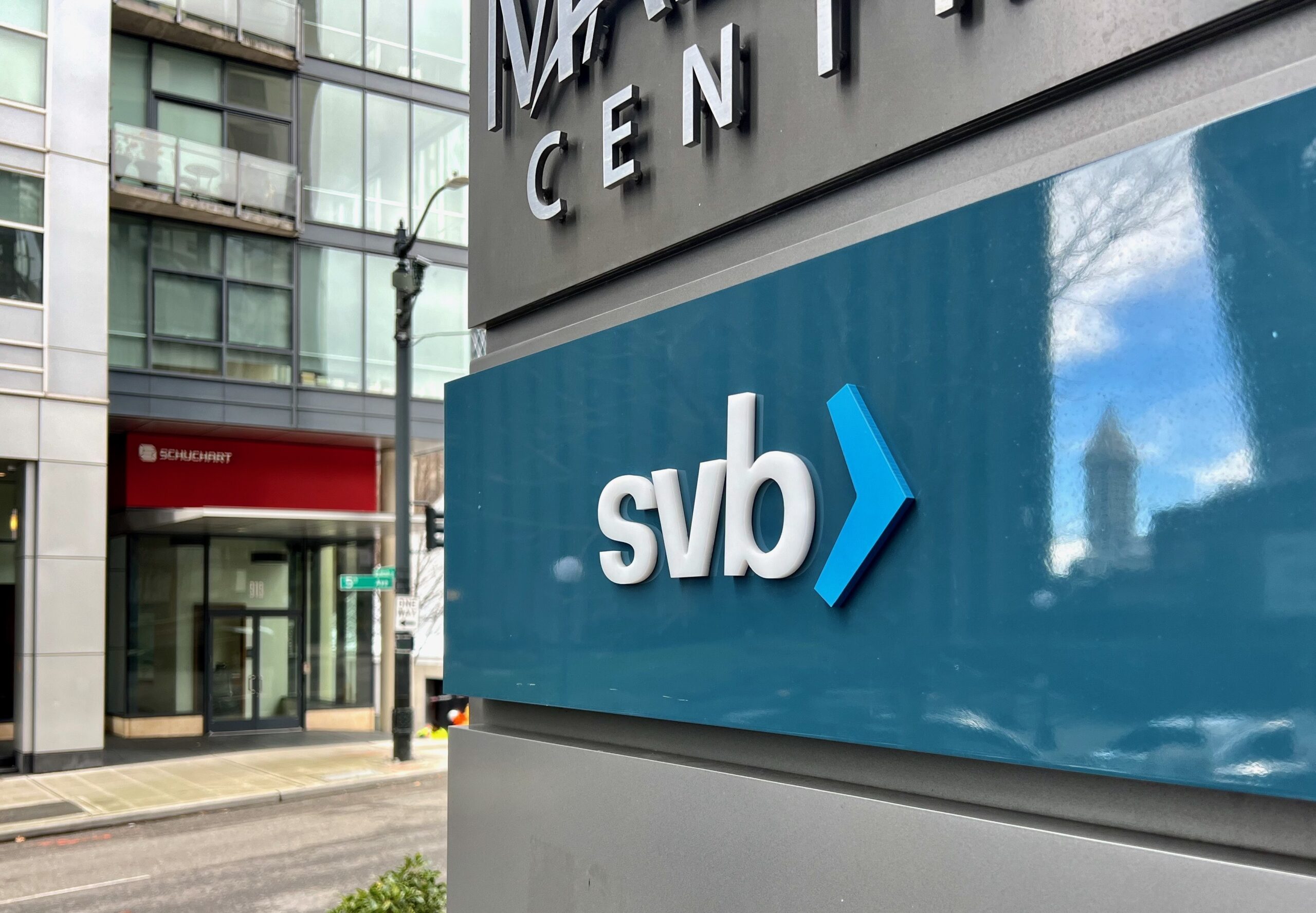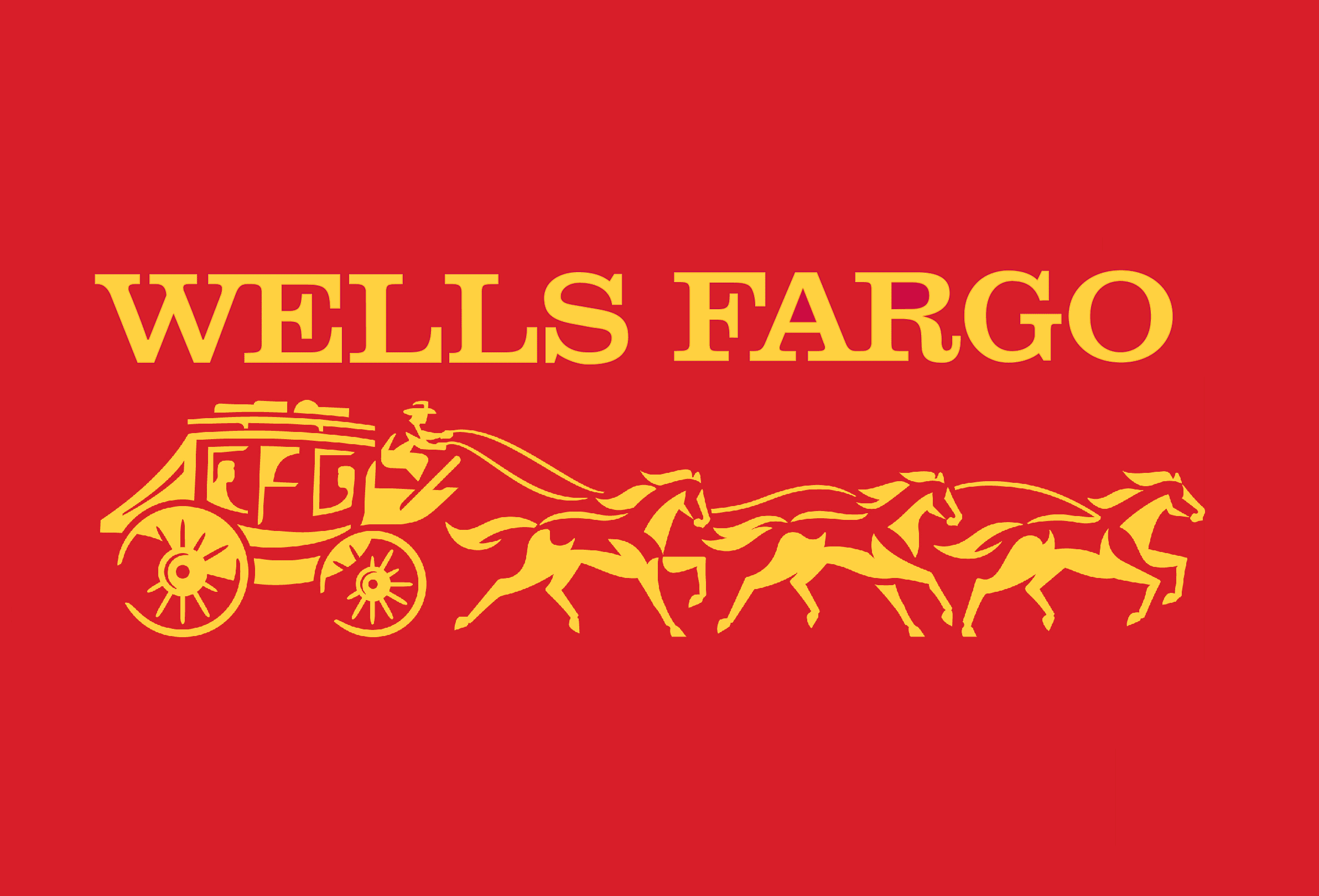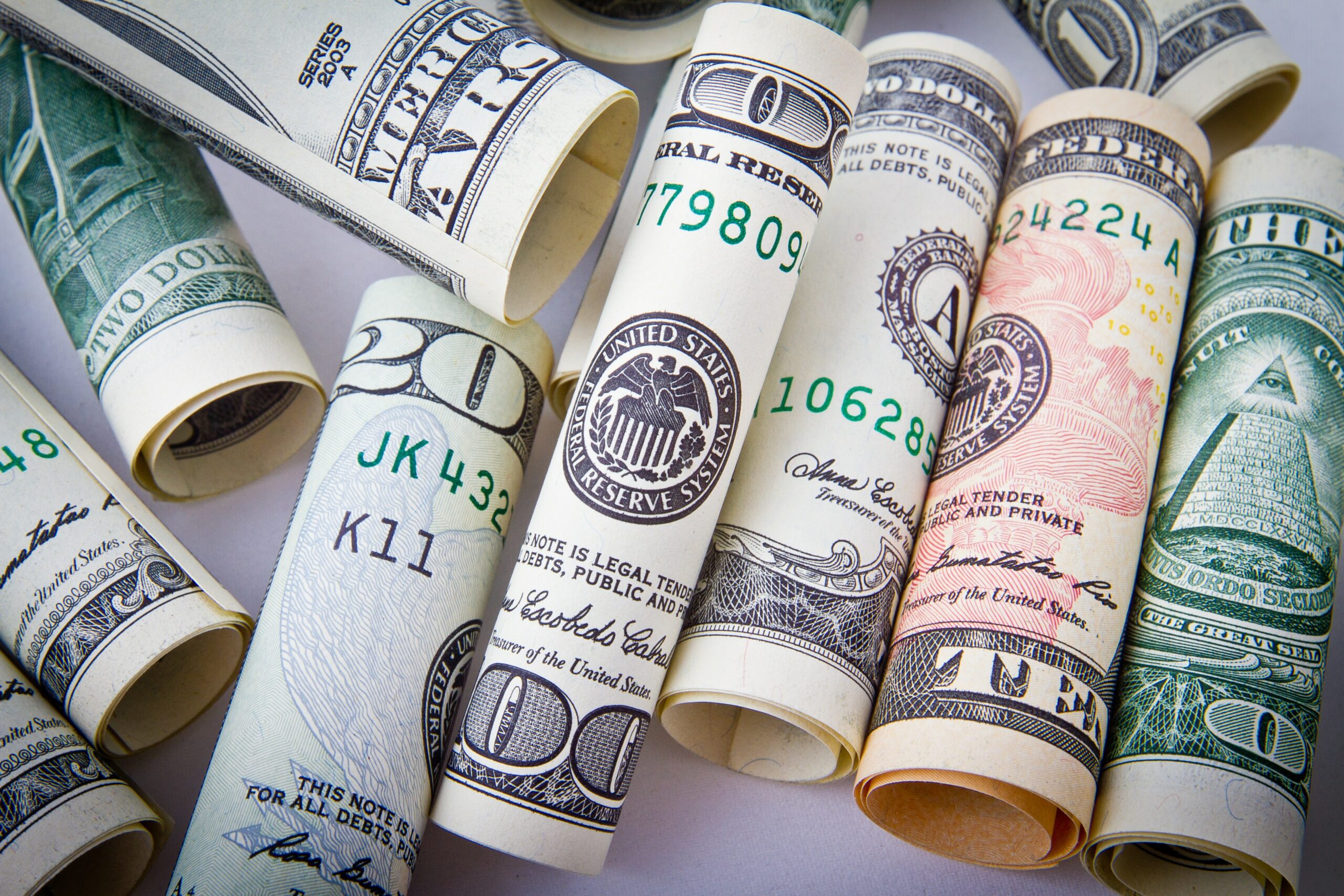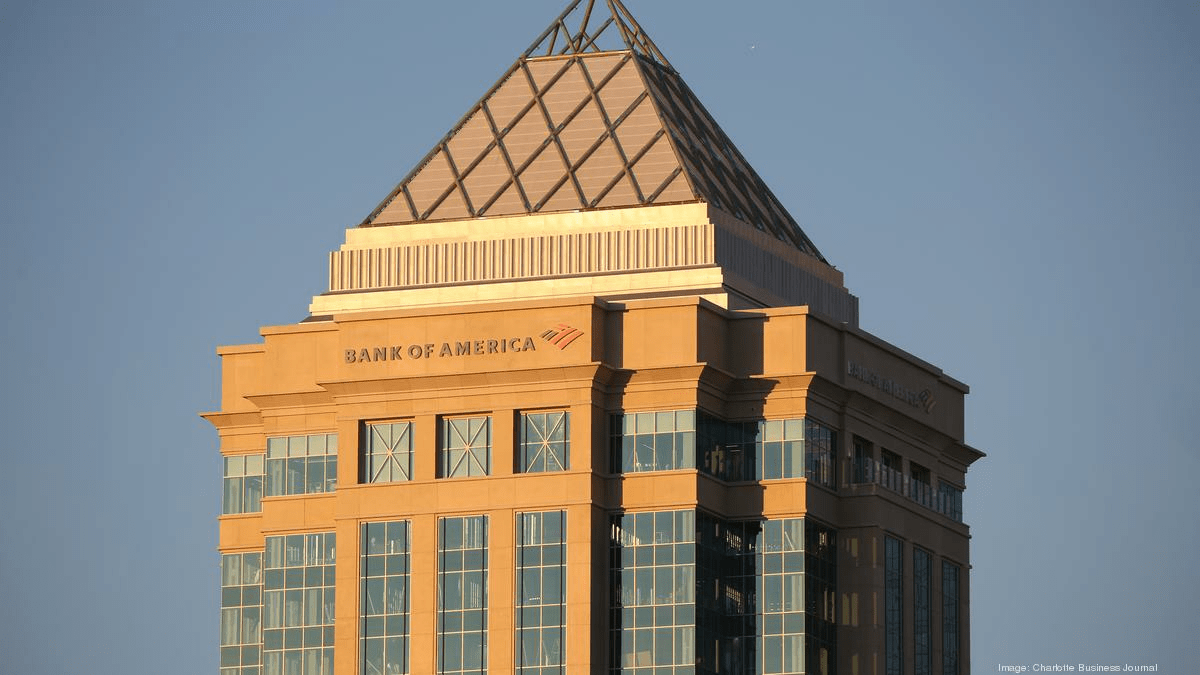2023 has been a tough year for banks. Several have failed already — and we recently experienced the second-largest bank failure in U.S. history.
It might have you wondering where your money is safe.
Don’t worry — most banks are considered safe for everyday banking needs. However, there are a few that are just plain awful.
This article’s dedicated to the worst banks in America — banks with a history of deceptive practices, banks that have been sued for defrauding customers, and more. And some of them are still in business.
But you won’t just learn what banks to avoid. You’ll also get a few suggestions for banks that have a better reputation so you can find a better place for your money.
At a glance: a better banking option
Not all banks are horrible! If you’re looking for a high-quality online bank, consider CIT Bank. I’ve been a Platinum Savings account holder for nearly 2 years, and have been extremely happy with their competitive interest rates (currently around 4.85% APY, a lot higher than the national average of 0.45% for savings accounts), responsive and easy to reach customer service department, and user-friendly banking platform. Check out CIT Bank today.
The 7 Worst Banks in America:
1. Silicon Valley Bank
Until recently, Silicon Valley Bank (SVB) was a regional bank in California that catered to the startup and tech community, to the tune of $200 billion in assets. Now, it’s considered one of the worst banks in the world.
In March 2023, the bank collapsed and was taken over by the Federal Deposit Insurance Corporation (FDIC).
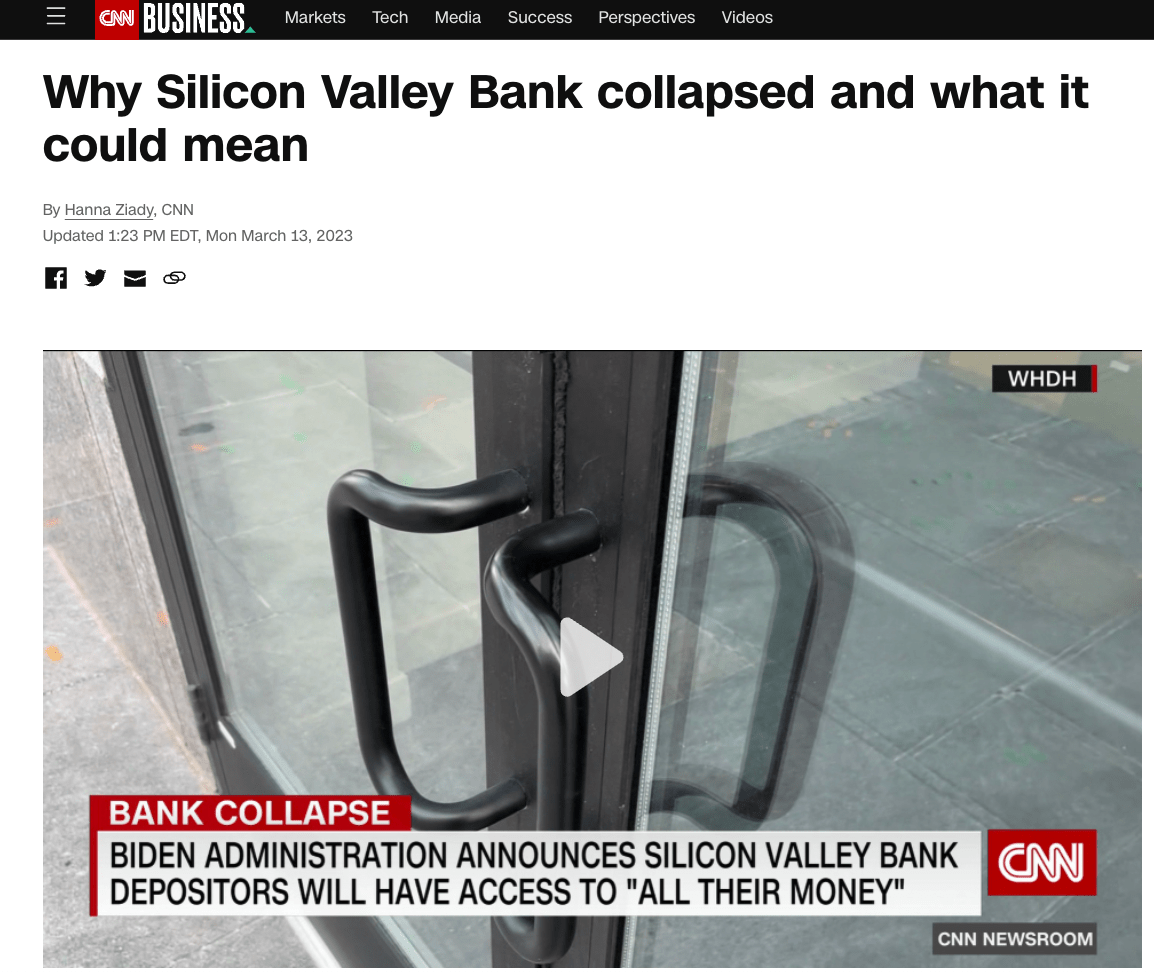
The bank failed for two main reasons:
- Poor investment choices. Namely, locking up $80 billion in deposits into 10-year U.S. Treasuries at low interest rates. As the Federal Reserve raised rates, those Treasuries dropped in value; SVB had to sell them at a loss to cover withdrawals.
- A big bank run. SVB clients held billions of dollars at the bank. As losses began to mount, they attempted to withdraw a total $42 billion in funds, which SVB could not cover.
But the collapse was just the beginning…
You see, the FDIC insures deposits up to $250,000. The problem? Over 90% of SVB’s bank accounts were over that amount. After a frenzied few days, the U.S. government stepped in and extended a special provision to refund all depositors, regardless of account size.
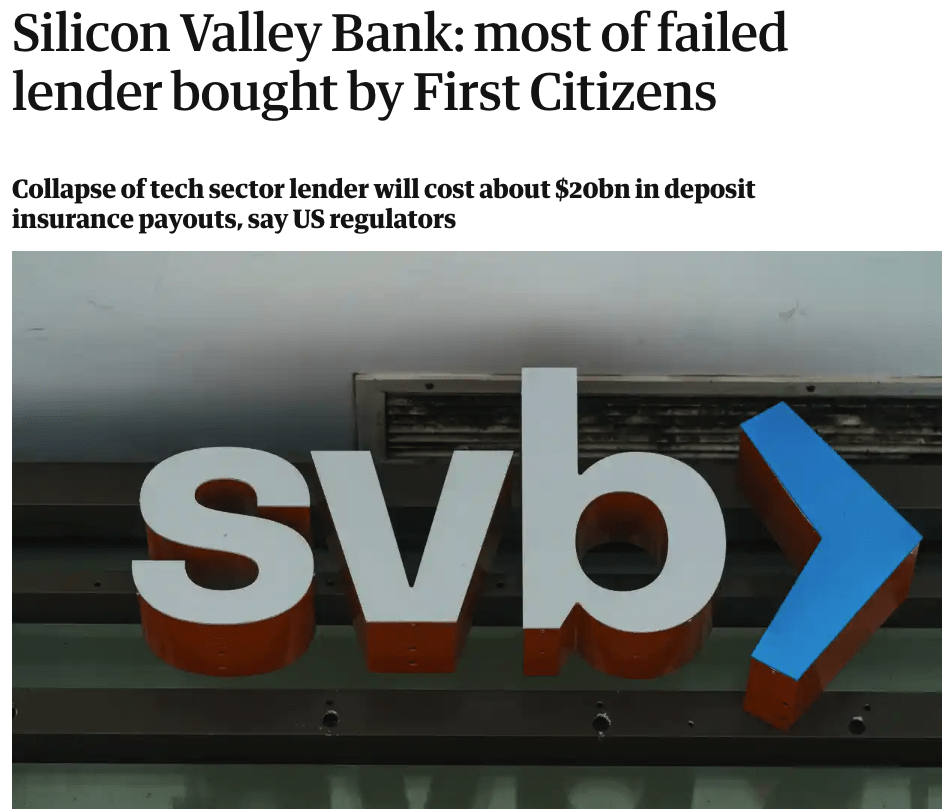
The aftermath?
- Silicon Valley Bank sold its EU bank to HSBC for only $1
- First Citizens Bank acquired the U.S. commercial business in late March 2023.
2. Bank of America
Dating back to 1904, Bank of America is among the older banks in the U.S. It’s also one of the largest, with over $3 trillion in assets.
But according to its millions of customers, it’s a terrible place to park your money…
- Bank of America has over 2,000 one-star reviews on the Consumer Affairs website.
- According to the Consumer Finance Protection Bureau (CFPB), Bank of America received over 13,000 formal complaints in 2022 alone.
- The bank’s signature products are some of the most-mentioned in complaints.
- Customer complaints include mentions of poor customer service, long hold times, and hidden fees.
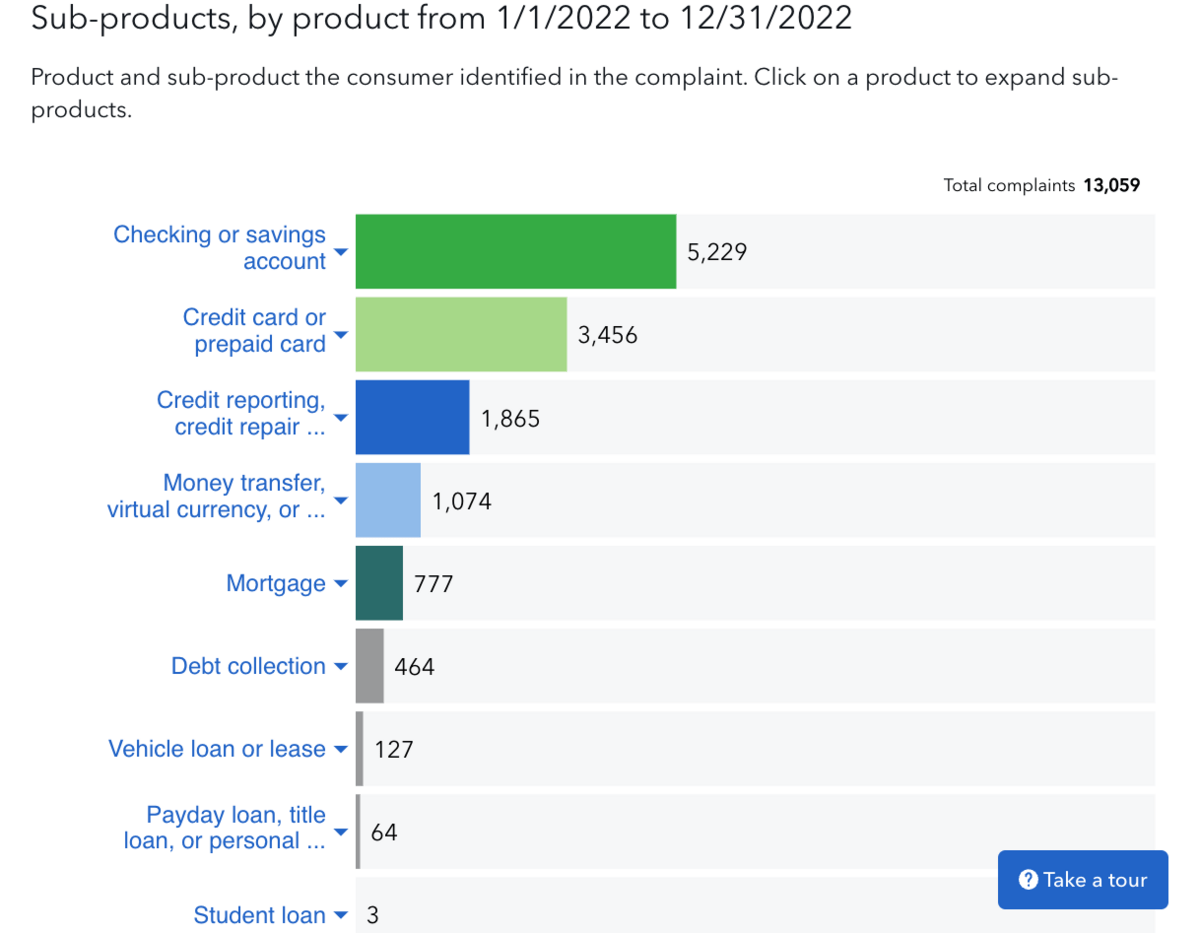
Additionally, Bank of America is constantly getting sued by regulators.
Despite its long history and massive customer list, Bank of America is one of the worst-rated active banks in the U.S.
3. Credit One Bank
Credit One Bank focuses on credit cards, particularly for consumers with poor credit profiles.
While it only has $300 million in assets, it brings in a lot of revenue — over $500 million in 2021 alone. Unfortunately for account holders, a lot of this income is generated through fees.
It’s not hard to see why this is one of the banks rated worst in America. The company has thousands of one-star reviews and plenty of customer complaints.
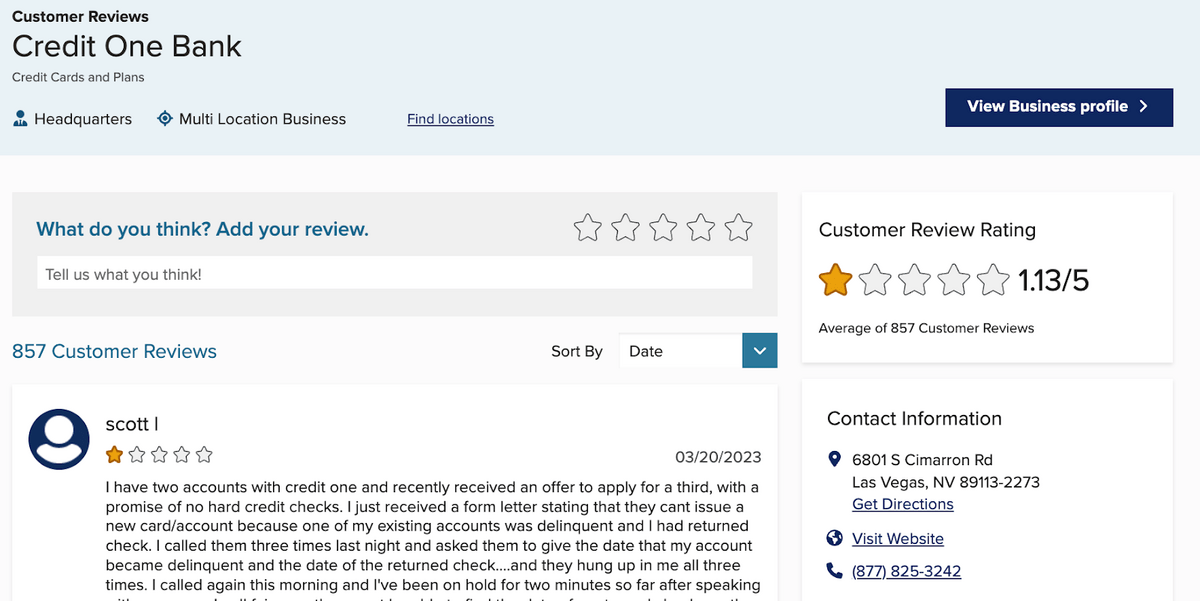
Customer complaints center around:
- Credit One’s collections practices
- Hidden fees
- Incorrect charges
- Reports of credit cards never being received
- High fees with low credit limits
True, Credit One Bank offers cards to those with poor credit. But their long list of hidden fees and confusing banking terms can make it tough for customers to actually improve their credit scores.
4. Wells Fargo
Wells Fargo is one of the biggest and most-established banks on this list:
- It was founded in 1852
- It currently has over 70 millions customers in 35 different countries
- It currently has nearly $2 trillion in assets.
Wells Fargo is infamous for a high-profile scandal that involved employees opening millions of fake accounts under customer names in order to earn a commission.
Wells Fargo was fined $185 million for the scandal, and many (rightfully) outraged customers moved their money elsewhere. It became known as one of the worst banks in the world.
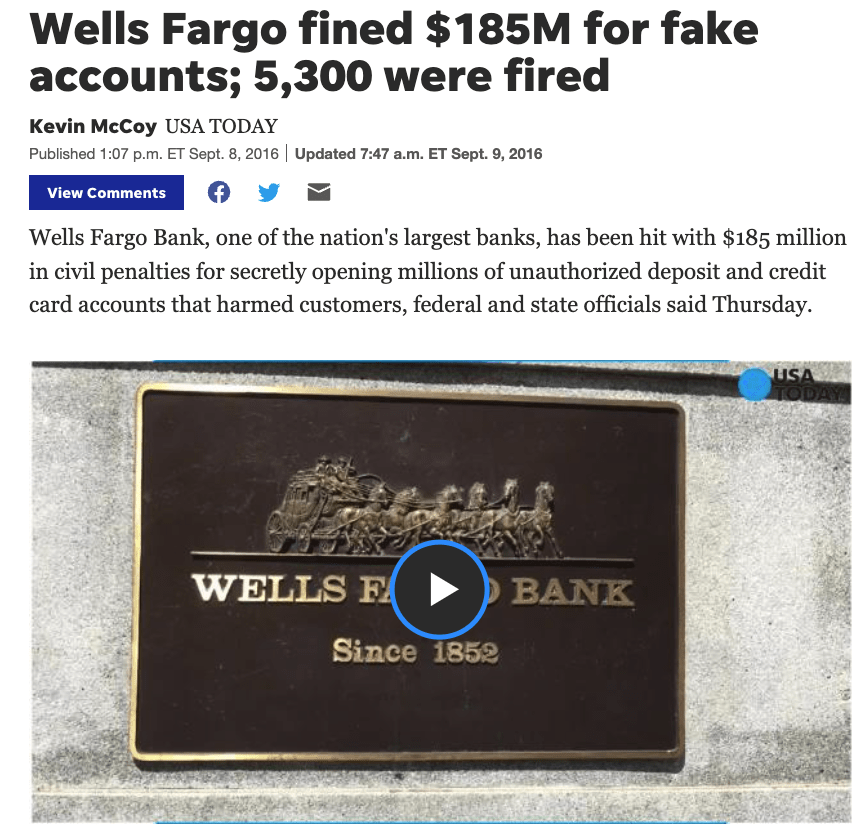
Even today, there are a large number of complaints lodged against Wells Fargo.
Nearly 11,000 formal complaints were filed with the CFPB in 2022 alone. Customers took issue with a number of things, including:
- Hidden fees
- Loan reporting and payment issues
- Incorrect charges
Wells Fargo is still huge and still in business, but it struggles with servicing customers well and is considered one of the most-hated banks in the U.S.
At a glance: better banking options
Not all banks are horrible! Here some of our our top picks for banking in the U.S.:
- Online-only, low fees, great APYs, plenty of perks: Varo Banking
- One of the best HYSA rates out there: M1 Finance
- Full-service, great interest rates, bonuses: Citi®
5. U.S. Bank
U.S. Bank has a few things in common with Wells Fargo…
- It’s old — U.S. Bank was founded 100+ years ago.
- It’s big — the fifth-largest bank in America, with $500 billion in assets.
- It got in trouble for faking a bunch of customer accounts
That’s right. In 2022, U.S. Bank was fined $37.5 million for opening fake accounts with customer information. But that’s just one piece of the scandalous pie. Since 2000, U.S. Bank has paid out over $1 trillion in settlements, penalties, and fines.
From a customer standpoint, that’s a major cause for concern.
6. Fifth Third Bank
Fifth Third Bank has over 1,000 branches in 11 states and over $200 billion in assets.
It may be small compared to some other national banks, but it has received its fair share of complaints, including 500 one-star reviews from Consumer Affairs and over 1,200 formal complaints to the CFPB.
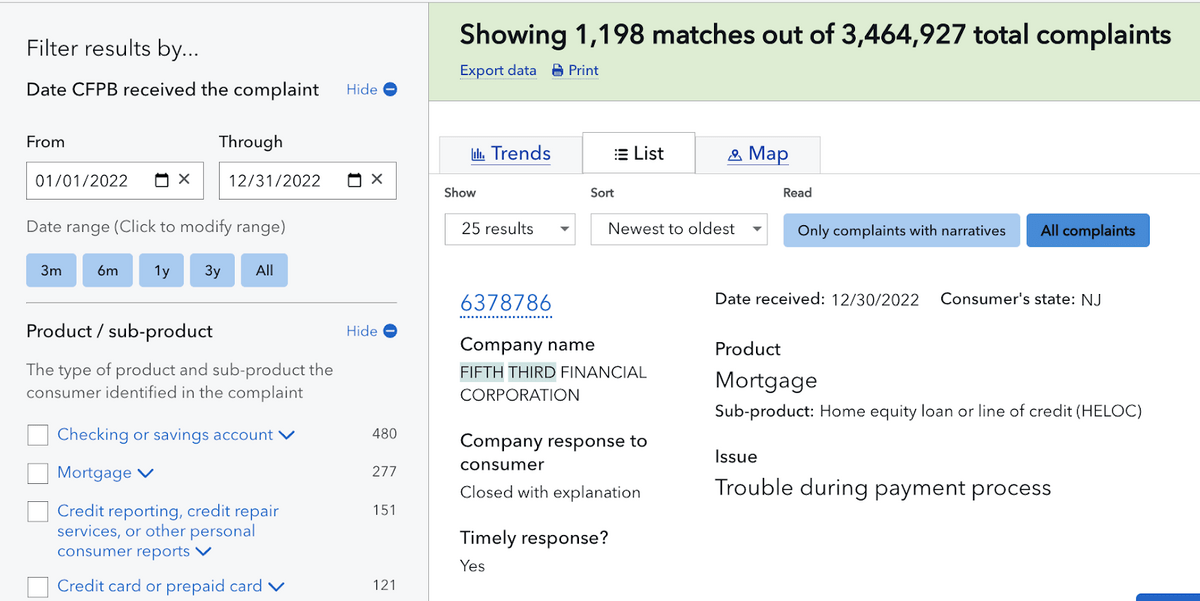
Complaints center around the following:
- Deceptive marketing practices
- Hidden fees
- Long hold times on deposits
- Poor customer service
But that’s not all. Like Wells Fargo and U.S. Bank, Fifth Third Bank was sued for unlawful opening of accounts in customer names, with pending penalties and settlement fees as of 2023.
7. PNC Bank
PNC Bank is the sixth-largest bank in the U.S., with over $500 billion in assets and millions of customers across 29 states.
They offer everything from mortgage services to checking and savings accounts to personal loans to credit cards.
But according to many unhappy customers, PNC Bank has plenty of unsavory characteristics. Among them?
- PNC Bank has received numerous complaints from clients that range from fraudulent activity to overdraft charges, and extremely long hold times for deposits.
- The CFPB reports over 2,000 formal complaints in 2022 alone, and Consumer Affairs has hundreds of one-star reviews from customers.
- PNC Bank is being sued in federal court due to the unlawful practice of automatically withdrawing funds from a customer’s account to pay off credit card balances.
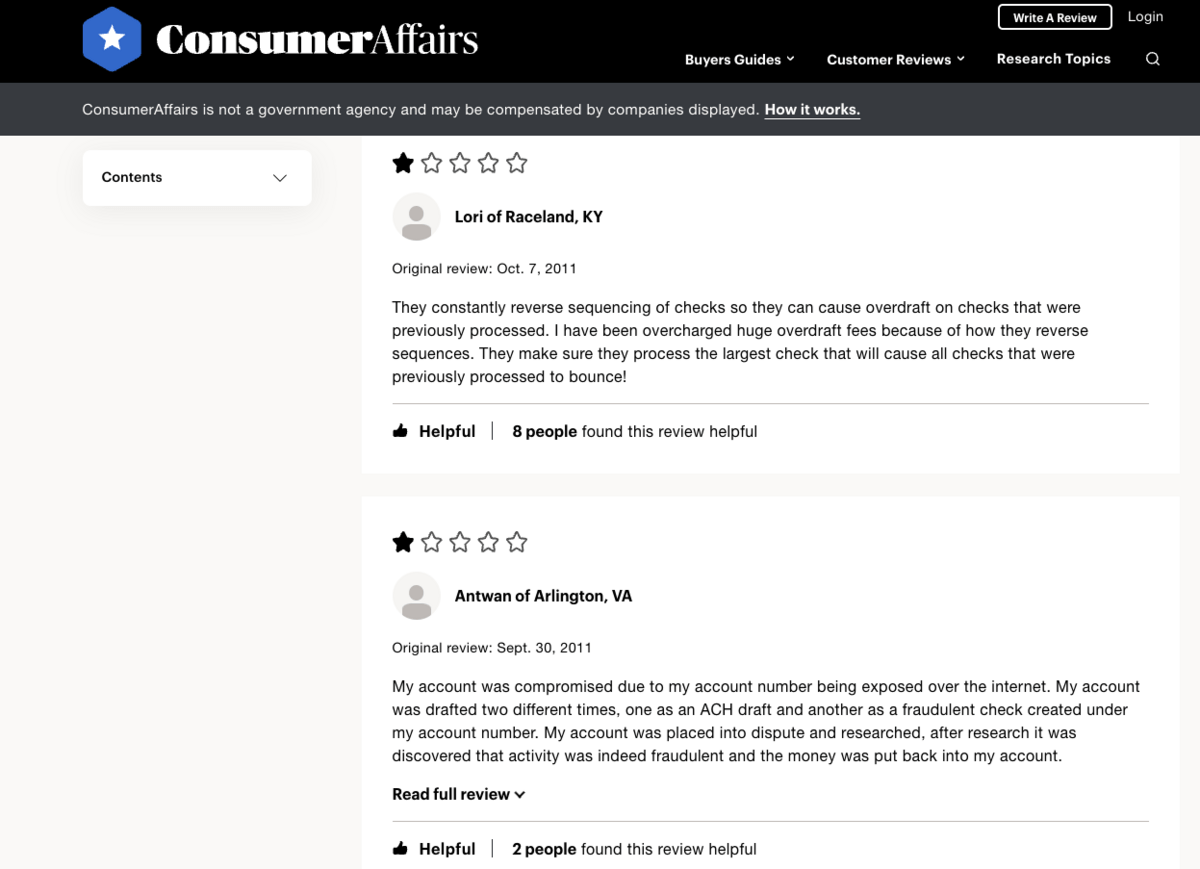
Overall, PNC Bank shows a history of charging fees and lack of protection of customer funds, so it would be wise to bank elsewhere.
What Makes These the Worst Banks?
Why do these banks top the list of “banks with worst security”? Why are they constantly being sued by the U.S. government?
Because they have a continued history of deceptive marketing practices and fraudulent activity.
These things can cost customers more money in the form of hidden fees, hurting your credit score, and/or signing you up for services you don’t want or need. Unfortunately, lawsuits and settlements haven’t put a dent in these practices.
Recently, there’s been an incredible rise in the number of alternative banking solutions available to Americans. Albert Genius is one such example, and they’ve done away with a lot of the predatory banking practices mentioned above.
The more you know…
Because of fractional reserve banking, banks are incentivized to invest your deposits — whether that’s in the form of customer loans or direct investments in financial instruments like bonds.
As was the case for Silicon Valley Bank, these practices can put your money at risk, especially if you have deposits more than the FDIC-insured amount.
2 of the Best Banks:
While some of the banks on this list are atrocious, here are some better banks to consider:
CIT Bank
CIT Bank is an online bank that offers high-yield savings accounts, CDs, money market accounts, and more. Currently, their high-yield savings account (Platinum Savings) offers 5.02% APY, which is a lot higher than the national average for savings accounts (a paltry 0.45%).
You might think that you need to fund such a high-yield account with at least $100,000 or more to get such a good rate, but CIT only requires a minimum deposit of $100, although you need to maintain a balance of at least $5,000 to get the aforementioned rate.
These accounts are great for beginners because they don’t require any decisions or maintenance. All you have to do is plop your money into the account and start earning more. That’s it.
Varo Bank
Again, it’s 100% online — but Varo Bank is a real bank, and it has a lot to offer.
Among other things, Varo Bank N.A., Member FDIC, is the first U.S. consumer fintech to receive a national bank charter from the Office of the Comptroller of the Currency. That happened in 2020, and the bank has been wowing customers with its great features ever since. Here are some of its key selling points:
- Earn up to 5% Annual Percentage Yield on your savings (much higher than the FDIC-reported national average of 0.33% as of 3/20/2023)
- No minimums
- No monthly fees or overdraft fees
- Send and receive money with Zelle
- Deposits are FDIC insured up to $250,000
Of course, the fact that they have no physical branches might be a problem for some people. But the bank makes it easy to withdraw at 55,000+ fee-free Allpoint ATMs in plenty of places you probably already shop, including:
Want to learn more? Check out our Varo Bank review.
Final Word: The Worst Banks in America
What do the worst banks in America have in common? It’s not just about size…
- They’re intentionally misleading.
- They offer poor service to customers.
- Plus, many of them have been sued for billions of dollars!
In short, these banks don’t deserve your business.
Be sure to do your homework and read the fine print before you open an account!
FAQs:
Which bank has most complaints?
Bank of America has the most complaints of any bank in the U.S., and also has more one-star reviews on consumer review websites. Customers consider it one of the banks with worst security and report poor customer service, long wait times, excessive fees, and the bank holding their money for no reason.
What bank has the worst reputation?
Wells Fargo has the worst reputation in the United States. It became one of the nation’s most-hated banks after the fallout from the huge scandal that involved employees opening millions of fake accounts in customers’ names.
Who is the number 1 bank in America?
The largest bank in America is J.P. Morgan Chase (commonly called Chase Bank), with over $3 trillion in assets and nearly 5,000 bank branches around the country. Chase offers checking and savings accounts, loans, rewards credit cards, wealth management, private client services, and commercial banking and loans.
Which are the safest banks in USA?
Most larger banks in the USA are considered “safe” due to FDIC insurance (up to $250,000) and a much wider client mix that would make it very difficult to cause a “run on the bank.” If you have more than $250,000 to deposit into a single account, you should always ask if additional deposit insurance may be available to protect your funds.
Where to Invest $1,000 Right Now?
Did you know that stocks rated as "Buy" by the Top Analysts in WallStreetZen's database beat the S&P500 by 98.4% last year?
Our April report reveals the 3 "Strong Buy" stocks that market-beating analysts predict will outperform over the next year.
